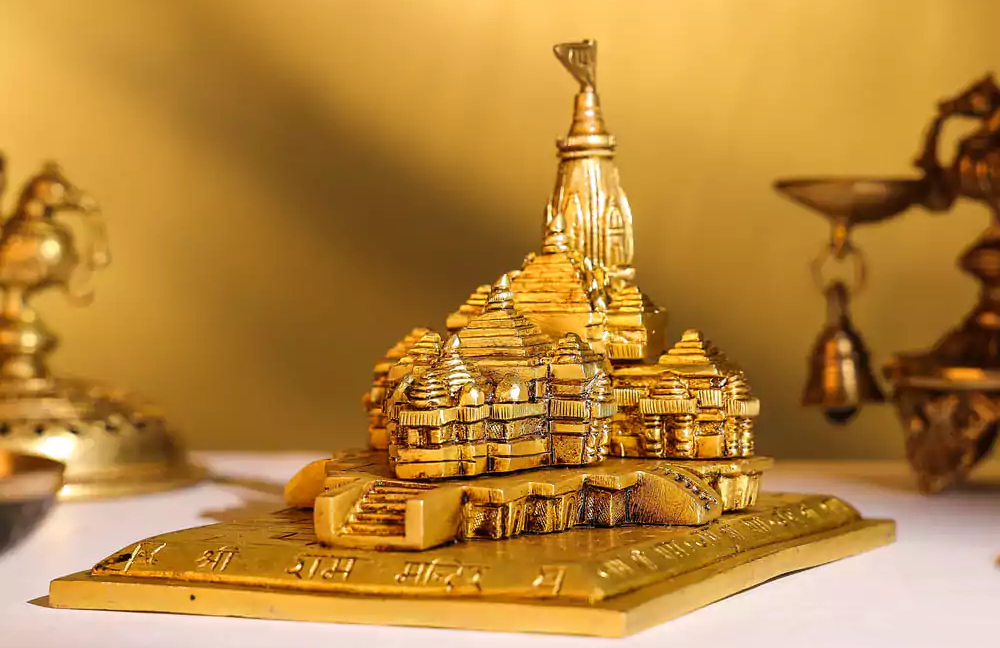
Menu

India’s rich religious and cultural historical past is represented by means of the Ram Janmabhoomi Mandir in Ayodhya. The construction of this sacred Mandir is essential for the country as a whole, as well as for the loyal followers of Lord Rama. It’s the final result of prolonged perseverance, hope, and belief. Ayodhya Janambhoomi Mandir, the birthplace of the holy Lord Ram, has undergone a long-standing historical and legal dispute, ceasing a controversial chapter in Indian records. Today, as we recall, the Ayodhya Ram Mandir Statue isn’t always merely an auspicious symbol but an example of the nation’s dedication to religious concord and non-violent decisions.
The Ayodhya Ram Mandir Statue is a grand temple built inside the Nagara style of temple structure, characterised by its towering spires or shikhara. The temple is constructed using pink sandstone and is spread across an area of 2.77 acres. A large courtyard surrounds the temple and has several smaller shrines dedicated to other Hindu gods. The temple’s greatest feature is the large Shaligram stone, a black stone believed to represent Lord Ram and brought from the Gandaki River in Nepal.
The temple is 161 feet excessive and has 3 flooring, every with a different purpose. The first floor is devoted to Lord Ram, the second floor is devoted to Lord Hanuman, and the third floor is a museum showcasing the history and culture of Ayodhya.
In addition, there is a community kitchen, a medical facility, and a hall known as a “yajnashala”, where Hindu fire rituals, or yajnas, are performed. The 67-acre temple complex is anticipated to grow into a significant global hub for religion and culture, drawing thousands of followers worldwide.
Let us now have a look at some pointers that signify the importance of this mandir’s construction.
In August 2020, the groundbreaking rite marked a symbolic beginning for the development of the Ram Mandir Statue. As the inspiration stone was laid, dignitaries, spiritual masters, and followers gathered to celebrate a new chapter in Ayodhya’s history and India’s cultural heritage.
The brilliance unfolds as one ascends 32 stairs through the Singh Dwar on the east. In the main sanctum, the childhood form of Bhagwan Shri Ram is enshrined. At the same time, the first floor houses the divine Shri Ram Darbar. 5 Mandaps, including Nritya Mandap and Sabha Mandap, add to the grandeur, adorned with statues of deities. A historic well, Sita koop, and proposed Mandirs for revered figures enrich the sacred space. Remarkably, no iron is used in the construction, emphasising traditional construction techniques. The Mandir complex boasts environmental considerations, with lush greenery covering 70% of the 70-acre area. This extraordinary Mandir showcases architectural brilliance and embraces Bharat’s traditional and indigenous technology, emphasising environmental consciousness throughout its sacred grounds.
The inauguration of the Ram Mandir on 22nd January 2024 is a historic event that will be marked inside the nation’s collective reminiscence. Dignitaries, religious leaders, and millions of devotees will witness the completion of years of anticipation and effort. It is a moment that surpasses the bounds of religion and turns into a party of India’s cultural and historical past.
The Ayodhya Ram Mandir Statue is not just a temple but a symbol of religion, unity, and a rich culture. The temple’s creation is a milestone occasion in India’s history, signifying the victory of truth, justice, and right over evil. The Mandir is a sworn statement to the continuing spirit of the Hindu network and their unwavering devotion to Lord Ram.



